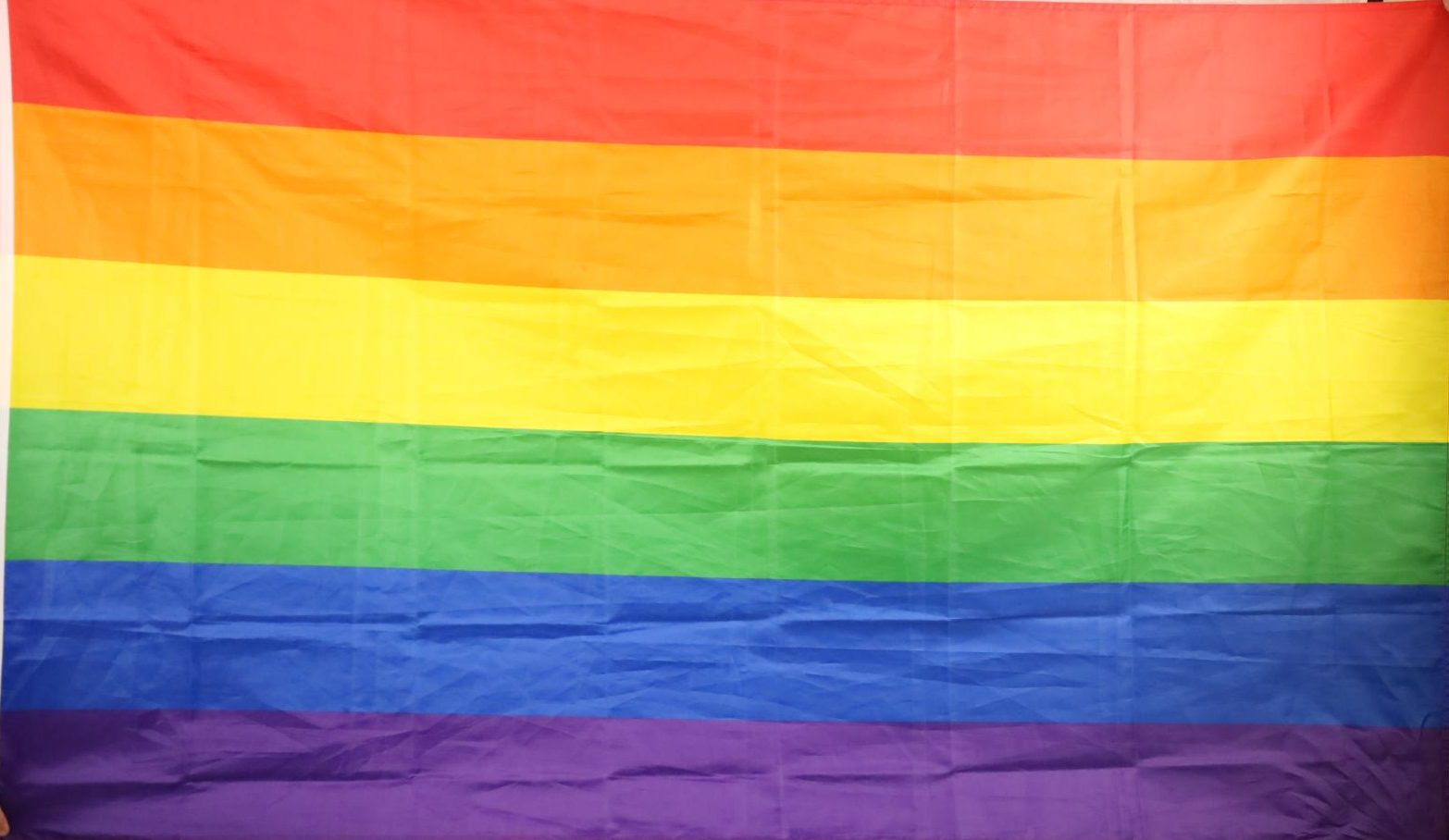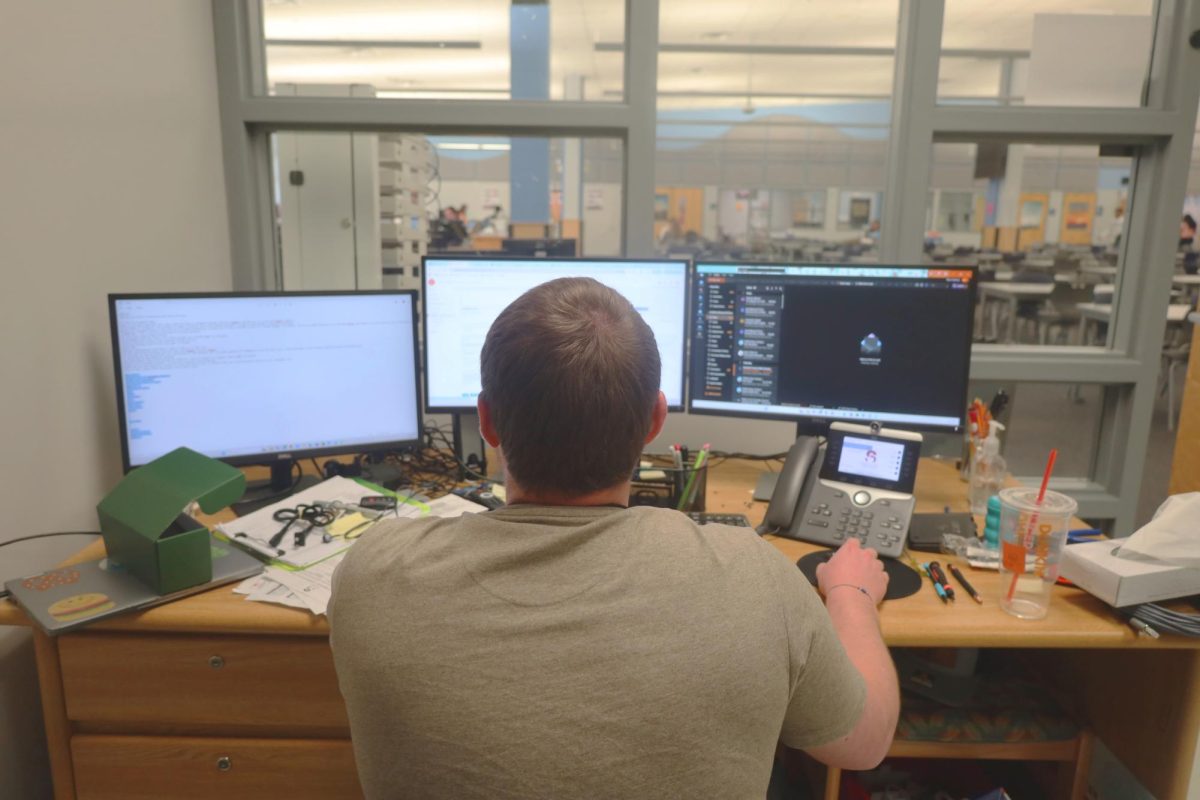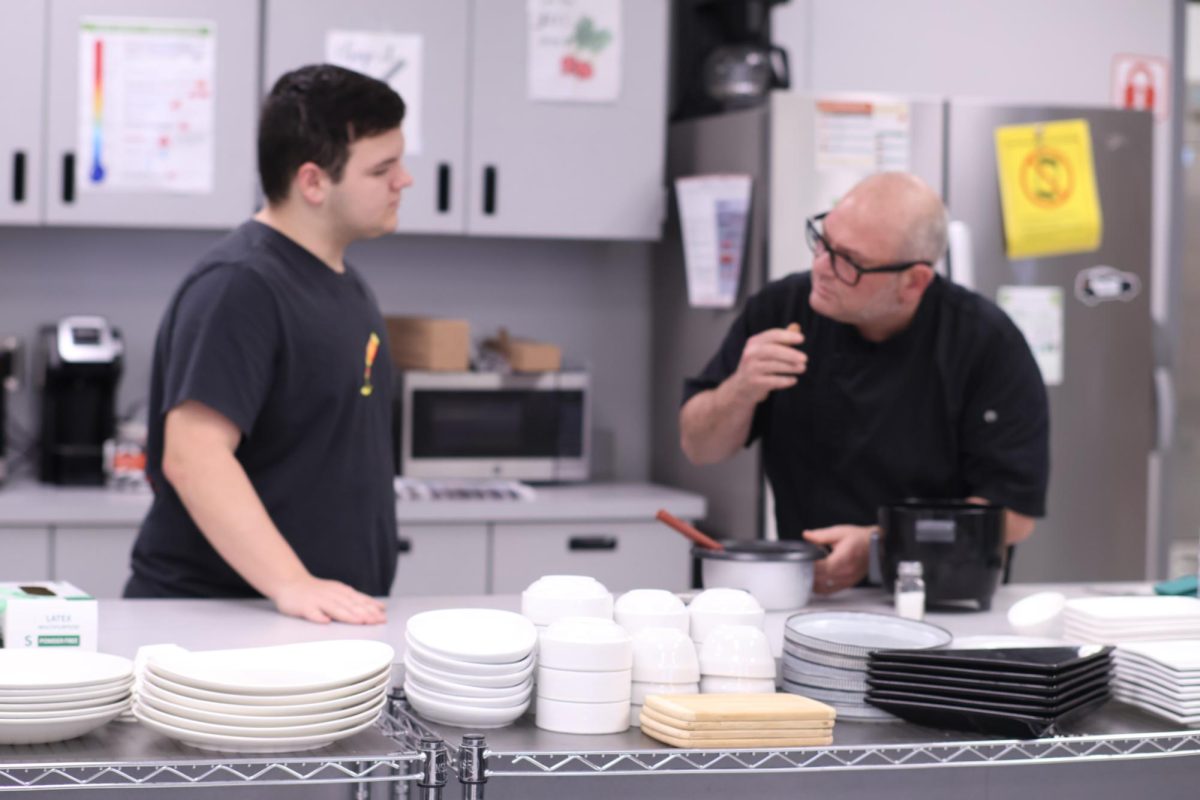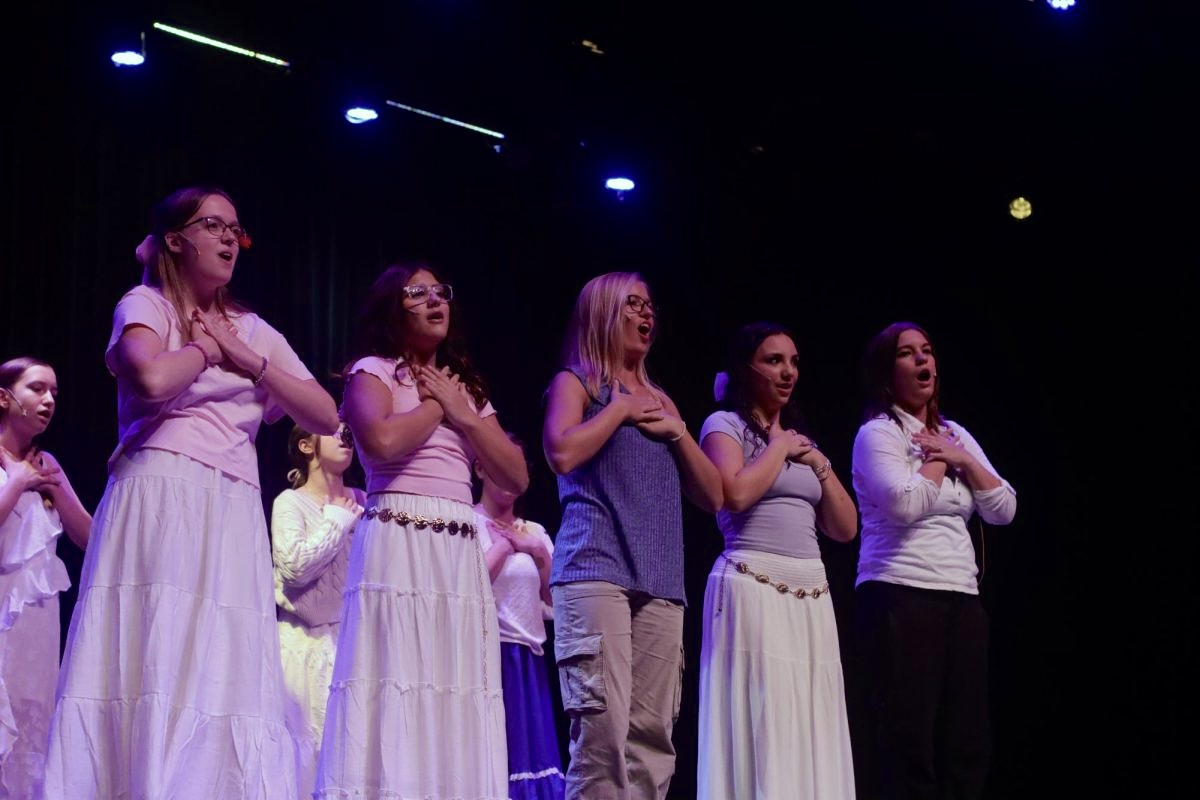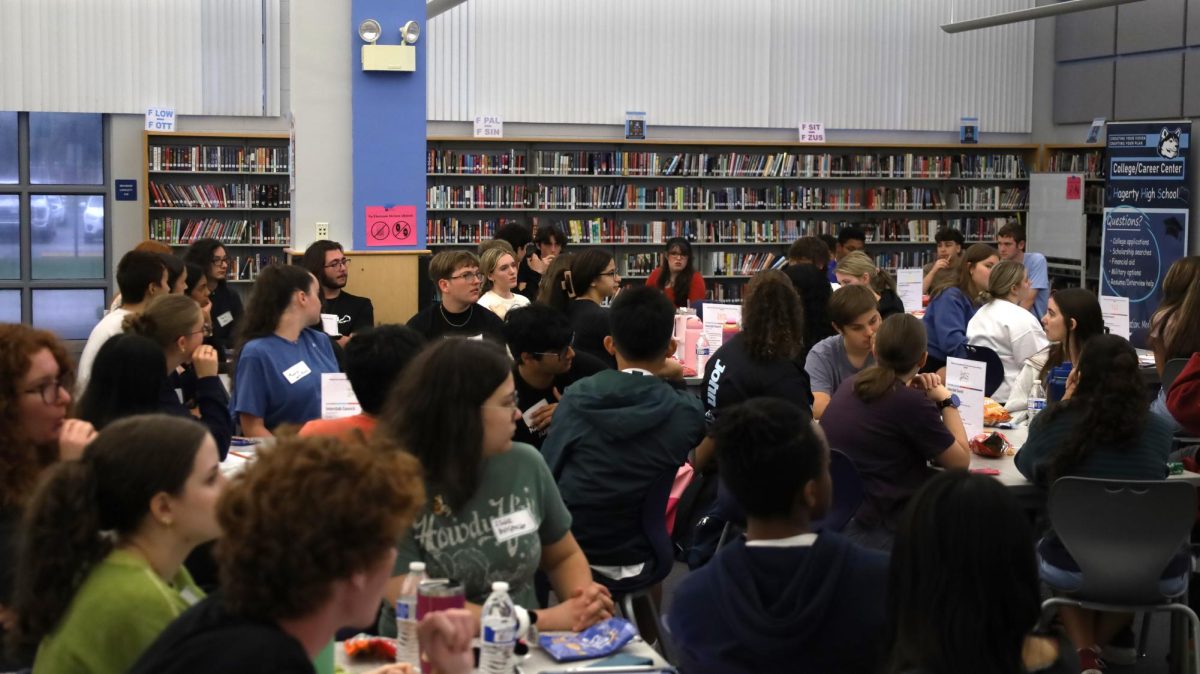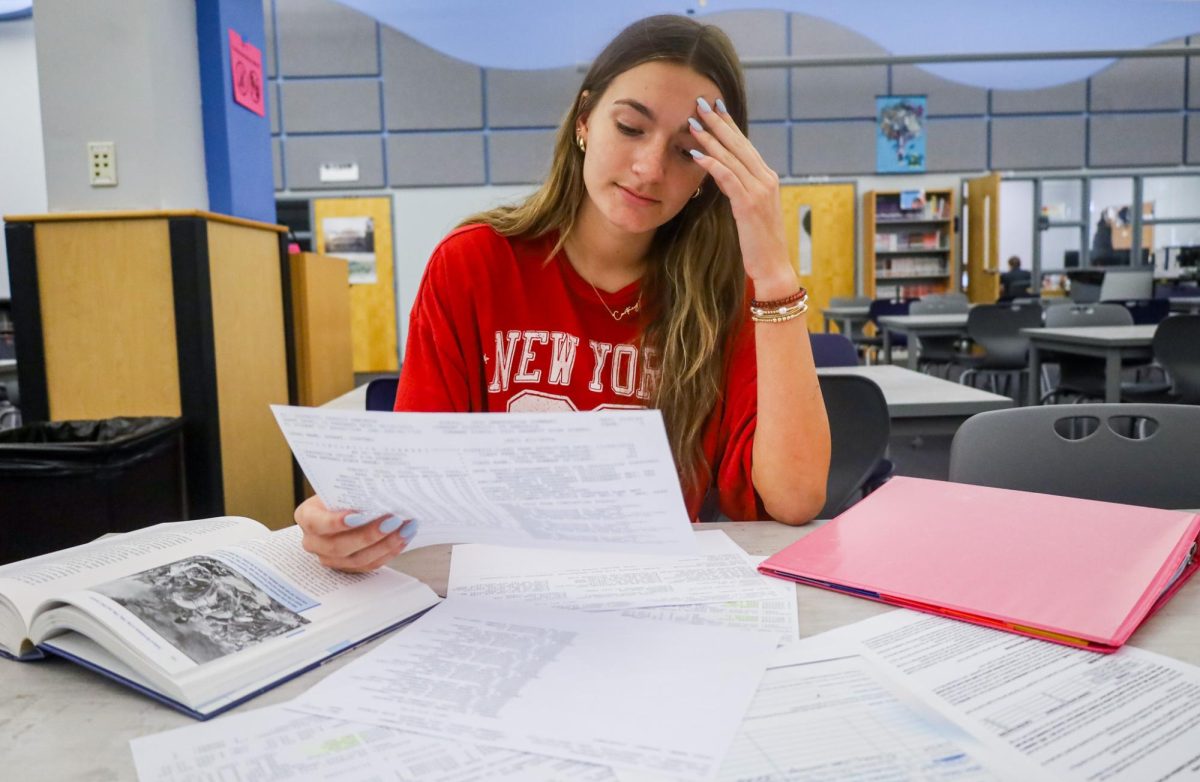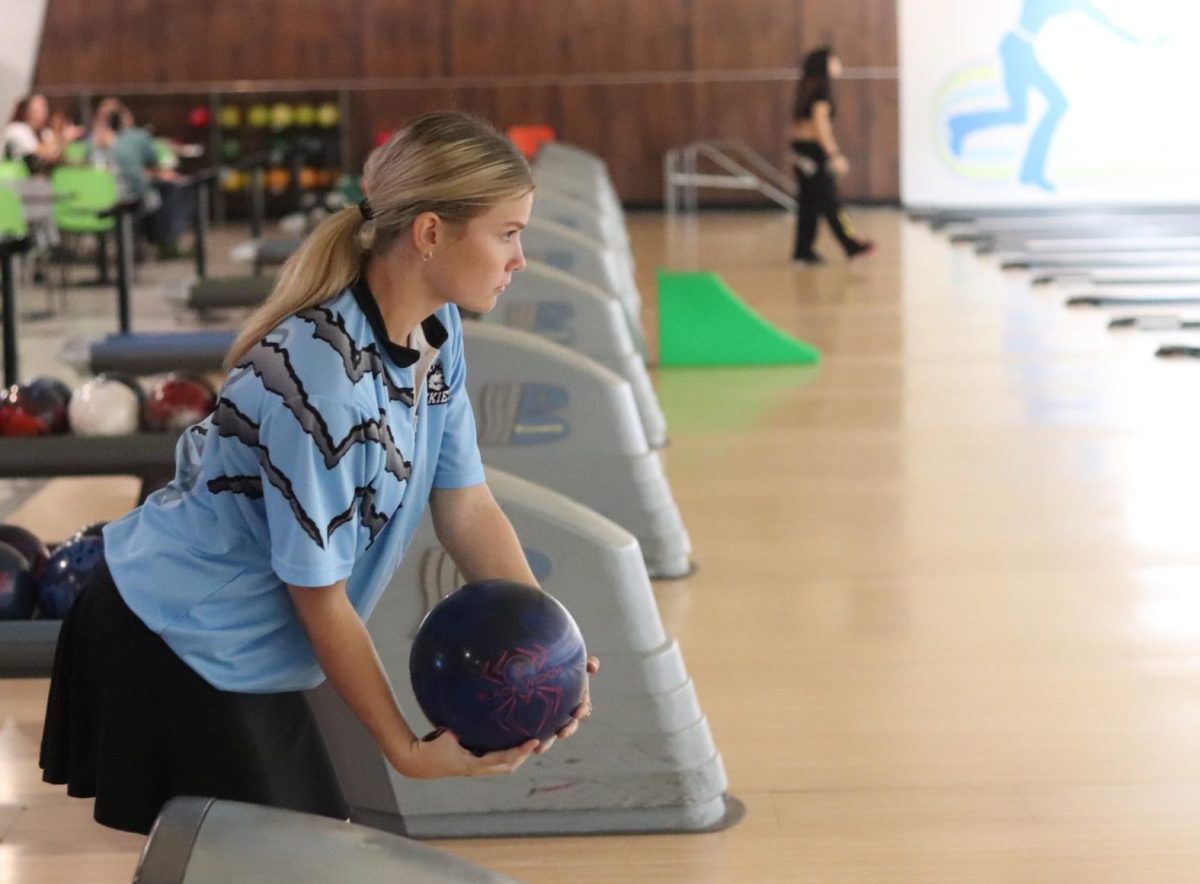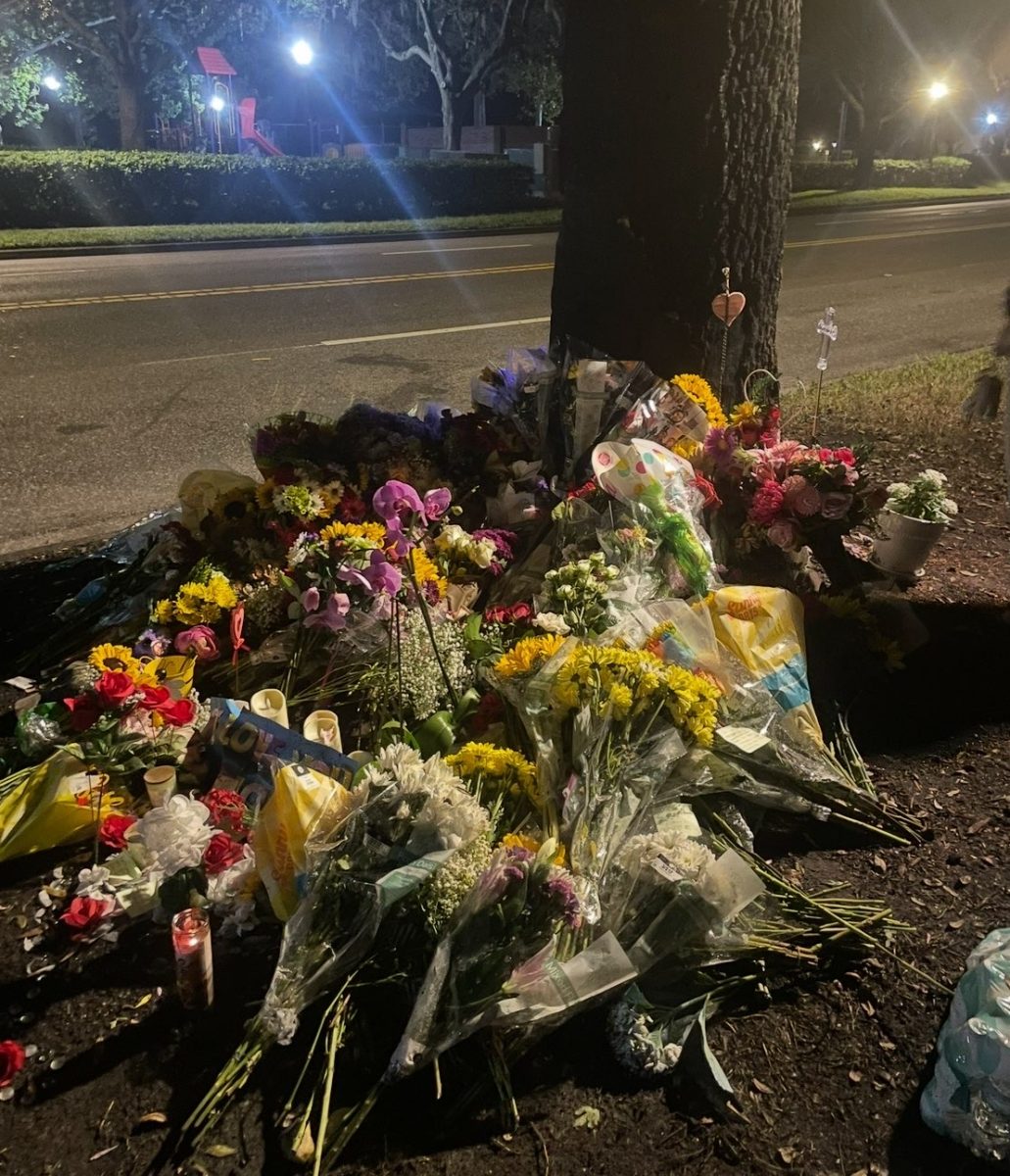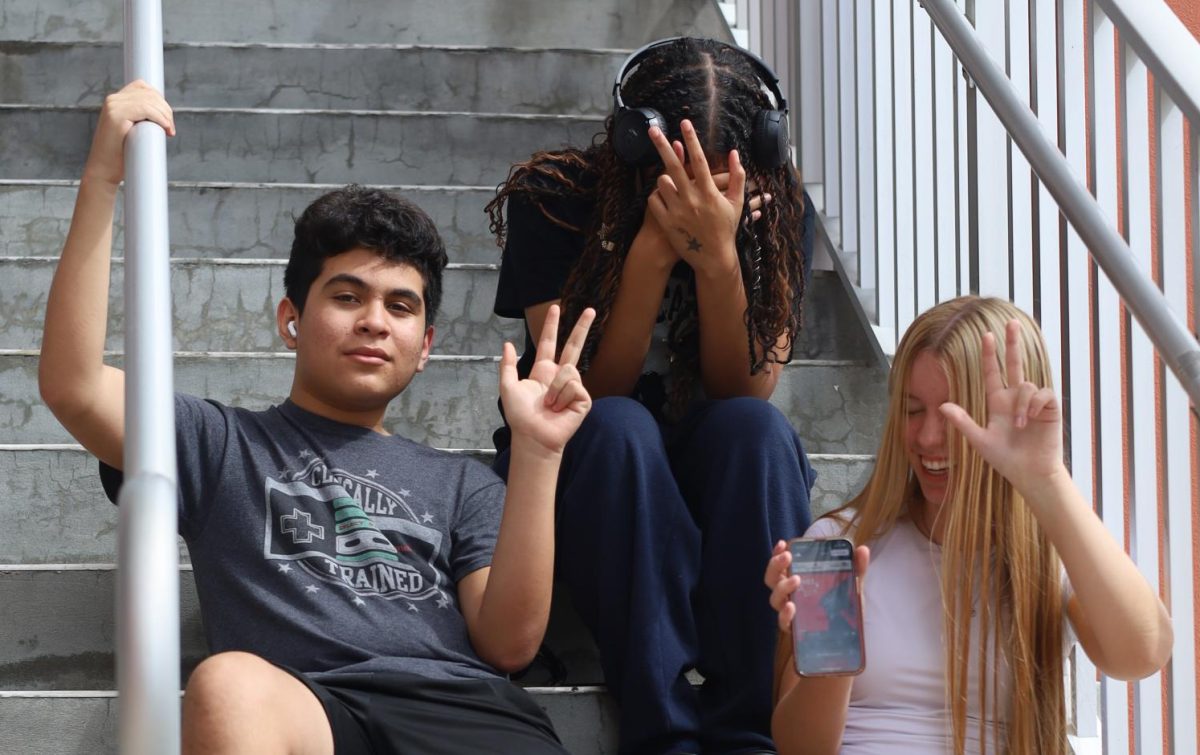On the morning of Feb. 6, band students gathered in their classroom as usual. And it was a pretty typical morning—except for one unsettling change.
“Some people came with a ladder,” sophomore band student Juliana Noorlander said. “And [Brian] Kuperman [one of the band directors] had the kids set up the ladder and hold it down while he climbed to grab the pride flag which was above his office at the time. We all just stood in silence for a few seconds realizing what was happening.”
Noorlander and her fellow band members had arrived before school started, just in time to see the removal of the large rainbow flag. None of them had anticipated watching this symbol taken away before their eyes, even among the increasing amount of laws and policies targeting LGBTQ+ students and teachers.
“We were in shock,” Noorlander said. “We immediately went to our phones to text our parents and friends what happened.”
Band was not the only classroom impacted. That day, drama teacher Jamaal Solomon also had to remove the pride flag that had previously hung in the theater room. Students began to speculate where this had come from, and whether it meant the removal of all classroom pride decorations.
For students who did not witness the removal in person, the realization came more gradually and less dramatically.
“For a few [students] it took a couple of days to figure out that it was gone, because it’s nothing that I normally would address,” Solomon said. “It was just there to show support.”
Freshman band student Alex Rocha Bidá was not there the morning that the flag was taken away, but they noticed its absence and were disappointed.
“I really liked how they had a pride flag in the first place,” Rocha Bidá said. “I started wondering why they would even take it down.”
So…why did they even take it down?
In January, a parent sent a complaint to Principal Robert Frasca, asking about the policy for “controversial issues.”
“A lot of people would want to know, how is that controversial?” Frasca said. “It’s controversial because look at the disagreement we’re already having. Whether I agree with the fact that it should be [controversial] is irrelevant.”
This instance fell under school board policy 22-40, which states that any classroom decorations or instructional materials dealing with controversial topics must relate directly to the curriculum or be removed from the teaching environment.
“I went to both teachers,” Frasca said. “I gave them the opportunity to provide me with an explanation of how they believed that that decoration hanging in their classroom related to the standards and curriculum that they were teaching, and gave them an opportunity to give me their reasoning for that.”
While Solomon decided to move the flag elsewhere rather than risk potential consequences, Kuperman sent in justification of the flag for Frasca to review.
“I did consult with our legal department,” Frasca said. “And their advice was that it didn’t meet the standard of the course. As a principal, I have to keep my personal beliefs out of my decision-making, and I have to make sure that I objectively look at policy and law and make sure that we are in compliance as a school.”
Based on the legal department’s counsel, Frasca determined that the flag would need to be taken out of the band classroom as well as theater.
The band and theater programs have long been known to have a broad mix of cultures, identities, and sexualities. And until that day in February, they were able to express as much relatively openly, without much disruption or interference.
Pride flags have been around since the ‘70s, and symbolize the diversity and pride of the LGBTQ+ community through bright rainbow hues. Since the first iteration was designed and produced in 1978, they have continued to evolve; one of the most common in modern times—other than the traditional six-colored rainbow—is known as the Progress Pride Flag. It was this version that the band classroom once displayed.
Band and theater, like any performing arts, benefit from a strong sense of community, so the teachers and members encourage students to be more open, and consequently, these classes have become safe, welcoming environments for openly LGBTQ+ students.
“In the theater department, we are creating and cultivating a culture of kindness,” Solomon said. “Everyone is free to be their true, authentic selves. We create a safe space for everyone to be included and invited, and everyone is welcome.”
The flags’ removal has been met with various responses, but most frequently frustration and anger from LGBTQ+ students and allies of the community. Students and parents alike have expressed concern for the growing lack of tolerance, and Frasca has received comments and complaints from people both for and against the school’s actions.
“The real question would be why the attention [goes] to the singular person trying to take it down, and not the people attempting to put the flag back up,” Noorlander said. “Adults and children alike are capable of being ignorant. However, people cannot be ignorant forever.”
LGBTQ+ students have continued to wear pride clothing, display pins and personal flags, and show support to each other in the absence of acceptance from the school board. Even as policies and practices such as this continue to grow in number and strictness, students maintain hope for the future.
“I would hope that in the future things like being queer are more common and not looked down upon,” Rocha Bidá said.




